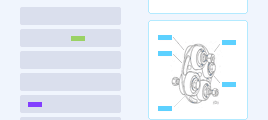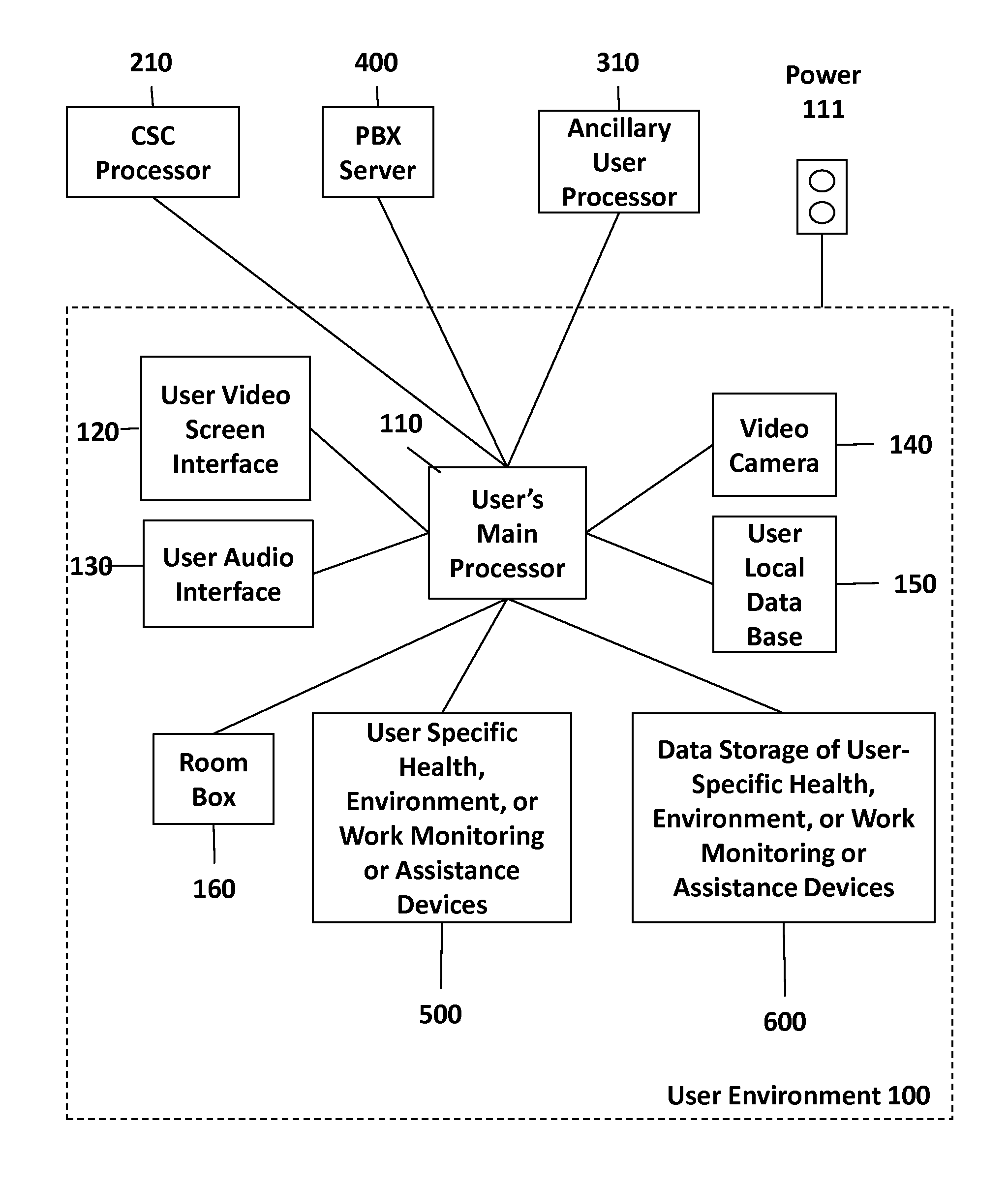It does not support the
continuous monitoring of individuals in routine living activities in their homes or work environments, nor monitoring of the environment and facilities in the home.
This decreases the robustness of the
system.
Under current art, there is no hardware or software standard that easily enables the joining of hardware or software (such as
data analysis or
inference algorithms) to systems.
This hampers the ability of this invention to rapidly integrate new capabilities that become available.
Also, it does not monitor the environment.
As a result, the system does not have the ability to let caretakers or medical professionals see or hear the patient and detect
mood, expressions, or even
skin color.
This invention does not provide for the ability of an attendant at a remote monitoring center being able to forward a video call to a
third party who would also benefit from seeing and hearing a patient.
This invention also does not provide for a back-up plan for having access to a remote monitoring center as well as access to
patient data that may be needed to address an emergent need.
Under current art, there is no hardware or software standard that easily enables the joining of hardware or software (such as
data analysis or
inference algorithms) to systems.
Similarly, there is high risk that the formatting or describing of the transport information will also require specific software to enable information to flow between elements of hardware and software.
The
impact of this is that the system may be extremely expensive to build with a wide variety of hardware sensors and
software modules that collect data, create information, or control devices in the system.
Furthermore, this software approach hampers the ability of this invention to rapidly integrate new capabilities that become available.
In communication with a person being monitored, the communication is limited to text and voice which misses the advantages of video interaction.
This invention also does not provide for a back-up plan for having access to a remote monitoring center as well as access to
patient data that may be needed to address an emergent need.
Under current art, there is no hardware or software standard that easily enables the joining of hardware or software (such as
data analysis or
inference algorithms) to systems.
This hampers the ability of this invention to rapidly integrate new capabilities that become available.
This patent does not provide for monitoring of emergent events in the environment not does it provide for
continuous monitoring of the patient.
This system does not monitor a person or the person's environment for emergent conditions nor provide a way to address emergent issues.
Furthermore, there is no description of a back-up capability for the central monitoring
station which puts the patient at risk of losing support in the event of communications disruptions with the central
station.
The
software architecture and schema do not support an easily scalable and expandable network of hardware and software components.
The video
communications system does not address the ability of family, caregivers, and friends to use the system to supplement support provided by the central monitoring
station.
Under current art, there is no hardware or software standard that easily enables the joining of hardware or software (such as data analysis or inference algorithms) to systems.
This hampers the ability of this invention to rapidly integrate new capabilities that become available.
This solution to moving
health information addresses networks over which to move data but does not address the effort needed to write software nor to manage the data messaging traffic flowing between sensors and the information engine.
This has the potential of creating high traffic on the
data transmission paths that could cause delays or loss of information to the applications running on the information engine.
This can result in critical functions not being accomplished.
As sources change, the algorithms may potentially require new tailoring software.
As sources change, the algorithms may potentially require new tailoring software.
It does not provide for fall corroboration by other means such as subsequent movement typical of walking, or sensing motion by motion detectors, or verbally interrogating the person if he needs help.
This could result in numerous false alarms that result in unnecessary responses by paramedics or friends.
These false alarms could result in desensitization of responders and their failure to urgently respond to a real fall.
Similarly, false alarms could create the sense that the system is nuisance to the point that he user simply turns it off and loses detection of a real fall event.
This could become unaffordable for people in need of fall monitoring.
Suspicion of the where imagery could be seen could result in some modest people declining its use in the
bedroom, dressing areas, or the bathroom which would decrease its practical utility.
It does not address monitoring for emergent,
time critical events nor the response to such events.
Additionally, the system does not describe the actual software architecture running the
inference engine.
As sources change, the algorithms may potentially require new tailoring software.
None provide the user with ubiquitous monitoring of a person and the environment for emergent as well as potentially emergent conditions with corroboration of detections and robust switching to back-up capabilities in the event of faults or
connectivity loss.
None provide for video
connectivity to family, friends, and non-professional caregivers for the purpose of maintain good
mental health.
All
neglect to address improvements on the state of the art of software architecting and creation of schemas.
As a result, software writers must still write software that is potentially unique or proprietary for each system arrangement because of the lack of standards in both hardware and software.
 Login to View More
Login to View More  Login to View More
Login to View More 


